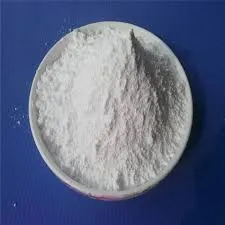Understanding Pharmaceutical Components The Building Blocks of Medicine
Pharmaceutical components are the essential ingredients that make up medications and play a crucial role in ensuring their efficacy, safety, and stability. These components can be categorized into active pharmaceutical ingredients (APIs), excipients, and additives, each serving specific purposes in the formulation of drugs.
Active pharmaceutical ingredients are the primary substances in a drug that produce the intended therapeutic effect. For instance, in a pain reliever, the API might be ibuprofen or acetaminophen. The quality, purity, and concentration of APIs are vital, as they directly influence the drug's effectiveness and patient outcomes. Regulatory agencies, such as the Food and Drug Administration (FDA) in the United States, set stringent standards to ensure that these ingredients are manufactured and tested in accordance with good manufacturing practices (GMP).
Excipients, on the other hand, are inactive substances that serve as vehicles for the active ingredients. They are crucial for formulating a drug in a way that facilitates its delivery and absorption in the body. Excipients can include fillers, binders, preservatives, and stabilizers. For example, lactose is often used as a filler in tablet formulations, while polyethylene glycol can serve as a solvent in liquid medications. The careful selection of excipients is essential to ensure that they do not interfere with the drug’s therapeutic activity and are safe for consumers.
pharmaceutical components

Moreover, additives are included in pharmaceutical formulations to enhance product attributes. These can include flavoring agents, colorants, and thickening agents. For instance, flavoring agents can improve the palatability of liquid medications for children, making them more acceptable for consumption. While these components are not essential for the drug's therapeutic effect, they significantly impact patient compliance and the overall user experience.
The development of pharmaceutical components involves rigorous testing and validation processes. This includes stability studies, compatibility tests, and bioavailability assessments. Stability studies ensure that the drug remains effective and safe over its shelf life, while compatibility tests ascertain that the API and excipients do not react adversely when combined. These processes are critical, as they help in identifying any potential issues that may arise during storage, handling, or administration of the medication.
In recent years, advancements in technology and research have led to the emergence of novel pharmaceutical components. Nanotechnology, for example, allows for the development of drug delivery systems that can target specific sites in the body, enhancing the effectiveness of treatments while minimizing side effects. Furthermore, the rise of personalized medicine has spurred the exploration of bespoke pharmaceutical components tailored to individual patient profiles, paving the way for more effective and efficient therapies.
In conclusion, pharmaceutical components are the cornerstone of modern medicine, encompassing active ingredients, excipients, and additives. The careful formulation and testing of these components ensure that medications are not only effective but also safe for public use. As research continues to evolve, the future of pharmaceutical components looks promising, with innovations poised to improve patient outcomes and revolutionize drug therapies.

